You probably know how prevalent servers are in our everyday lives. They’re essential for just about everything we do online, including checking email, browsing the web, using your mail server to check email, and paying with a debit card at the point-of-sale (POS) system at the grocery store.
But what happens if virtual server hardware stops working? Downtime can be disastrous for a company, wreaking havoc for their customers and preventing sales altogether. When a virtual server goes down, it causes many problems and costs a lot of money.
A server monitor is used to make sure that every server keeps running as it’s supposed to. Monitoring software and tools look for bugs and analyze data to make sure that the server and networks devices are working properly.
If you’re looking for a server monitoring tool, here are 11 features it must have and why they’re so important.
I’ll cover:
- Server Monitoring Tool Features and What They Do
- How to Choose Server Monitoring Tools
- Open Source vs Commercial
- What Do You Think About Server Monitoring Tools?
Server Monitoring Tool Features and What They Do
There are a lot of server monitoring tools out there and they all have different features and monitoring capabilities. When choosing the one that’s right for you, think about what you need, what you don’t, and what product gives you the best protection. Here are 11 features of server monitoring tools and why each matters.
1. CPU Load Monitoring
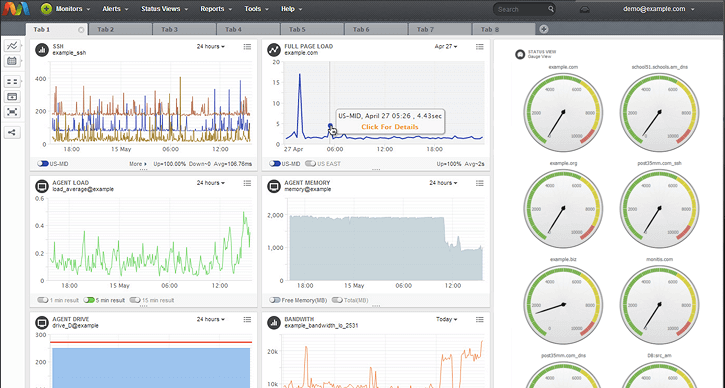
A server monitoring tool should monitor CPU load. CPU usage is a strong indicator of the health of both the server and the network. When usage spikes, everything slows down, and eventually, everything crashes. Heavy CPU usage can also lead to memory problems and overall server performance issues.
2. Bandwidth Monitoring
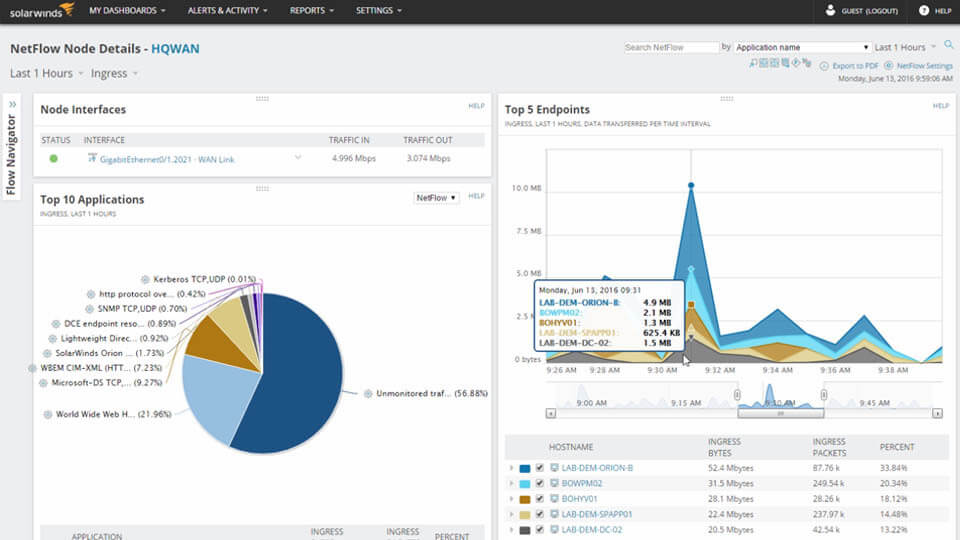
Many people think that bandwidth is internet speed, but it’s not quite that simple. Bandwidth is the volume of information sent over a connection in a certain period of time. It’s calculated in Mbps or megabits per second.
A server monitoring tool that monitors bandwidth watches both inbound and outbound data transfers. This information helps you know who is using the most bandwidth, which can help you keep an eye on everything going on in the network.
This feature is key to server monitoring because you can catch people abusing the network and doing things that use up a lot of bandwidth. Ultimately, this results in users complaining about programs taking too long to open or the internet running too slow, so catching people and programs that use too much bandwidth is essential to solving server performance issues.
Server monitoring capabilities can identify bottlenecks and congestion and give you a better idea of what’s going on so you know where and when to intervene.
3. Disk Usage Monitoring
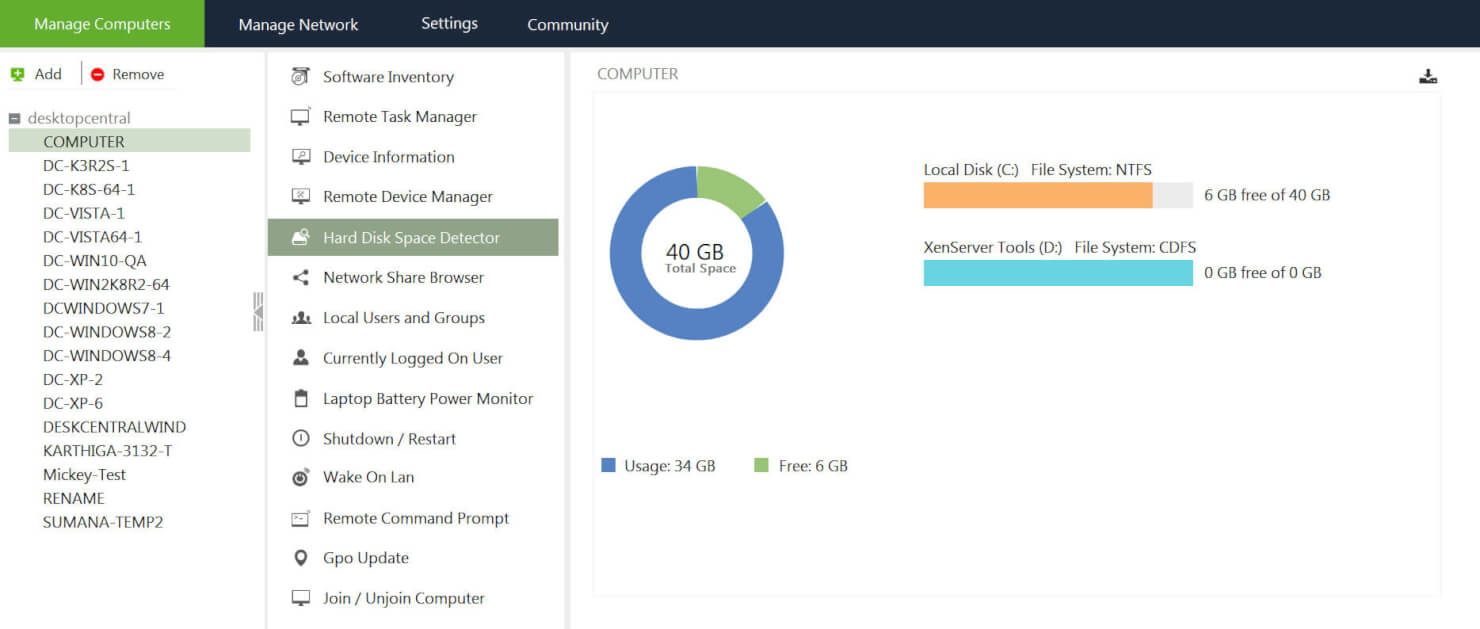
Monitoring disk usage is another key feature of a good server monitoring tool. With this feature, you can quickly determine how much disk space is left so you can mitigate the risk of downtime.
You can configure the tool to let you know when the disk usage reaches a certain level so you can handle it before it becomes a problem. A server monitoring tool can scan everything on the hard disk and let you know exactly what’s taking up space to make capacity planning easier.
4. Error Rate Monitoring
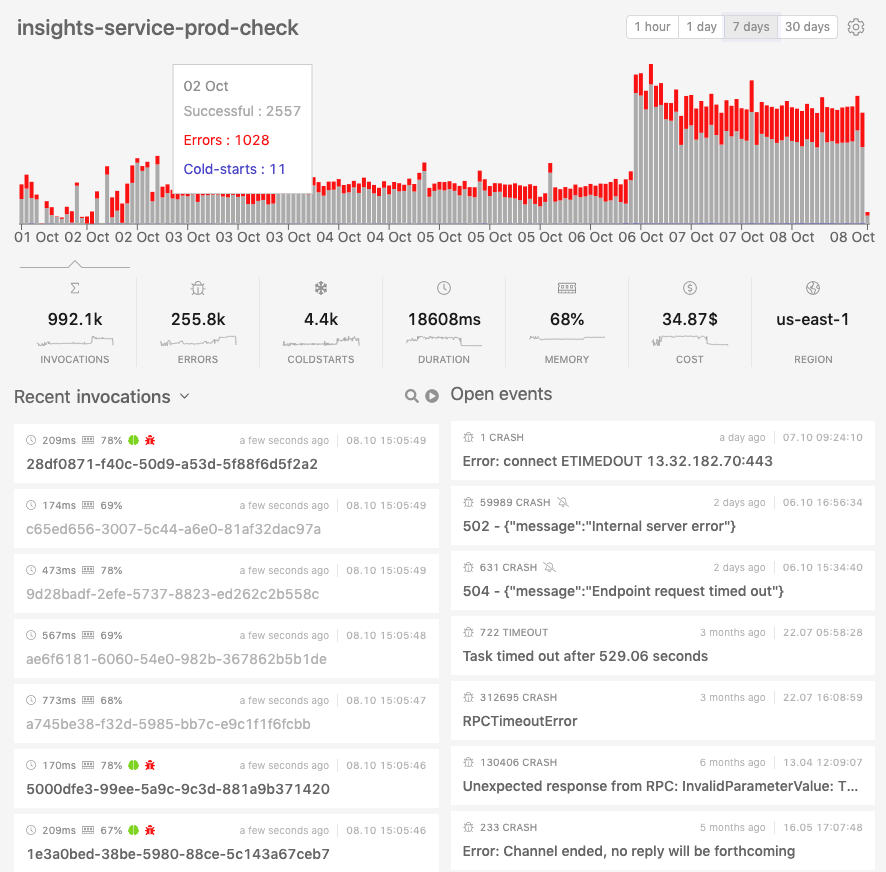
Errors happen, but they are more likely when the server’s CPU is under a big load. The error rate is the number of problems that occur relative to the number of total requests. Errors include requests that were timed out. This is one of many very important performance metrics for a server monitoring tool to be able to keep an eye on.
Some feel that an error rate of less than 1 percent is acceptable but obviously the goal is to have as few as possible. You may not be able to prevent all errors across all network devices but a server monitoring tool helps you identify when you have a real issue.
5. Firewall Monitoring
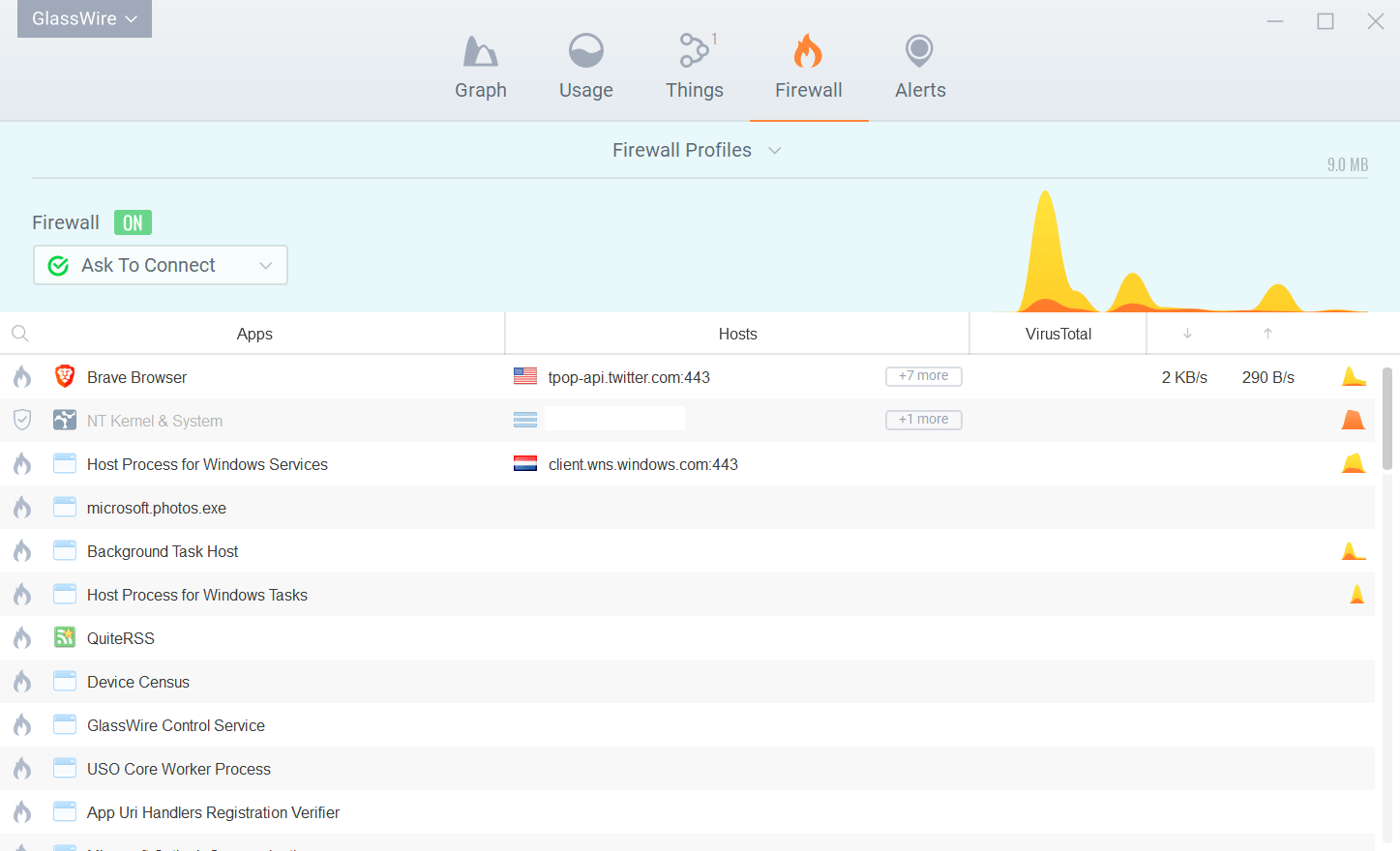
A firewall is a security device that monitors both incoming and outgoing traffic and decides whether to let it through or block it. Computers have been using firewalls for a long time and performance monitoring can help analyse firewall logs, configurations, rules, and alerts.
One of the nice things about monitoring firewalls is that it’s highly reactive and can identify threats and issues right when the problem presents itself. That way, you can view the key metrics, identify the problems, and deal with it as soon as possible.
6. Network Monitoring
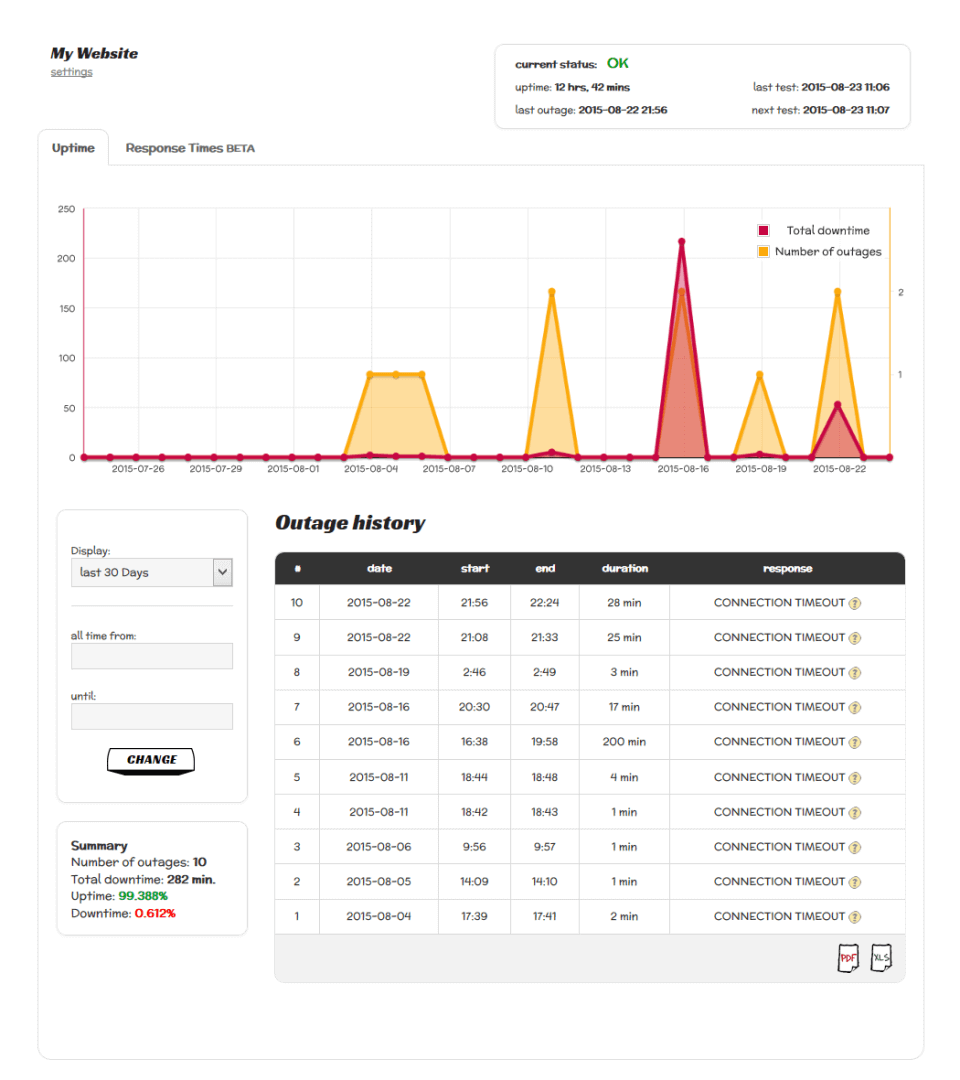
Network monitoring tools are designed to test different components within a vast computer network that would otherwise be impossible for humans to manually check on a day-to-day basis. Even when everything is working as it should, network monitoring builds up a database of network statistics that can be used to solve problems and answer questions in the future.
Network monitoring is going to check for things like:
- Are all devices on a network properly communicating with each other?
- Is there any notable network latency?
- What is the average uptime vs downtime?
There are different network monitoring protocols, like Simple Network Management Protocol (SNMP), Internet Control Message Point (ICMP), and Cisco Discovery Protocol (CDP). Each has their own specialty and use case, for example ICMP is best for error reporting specifically.
7. RAM Monitoring
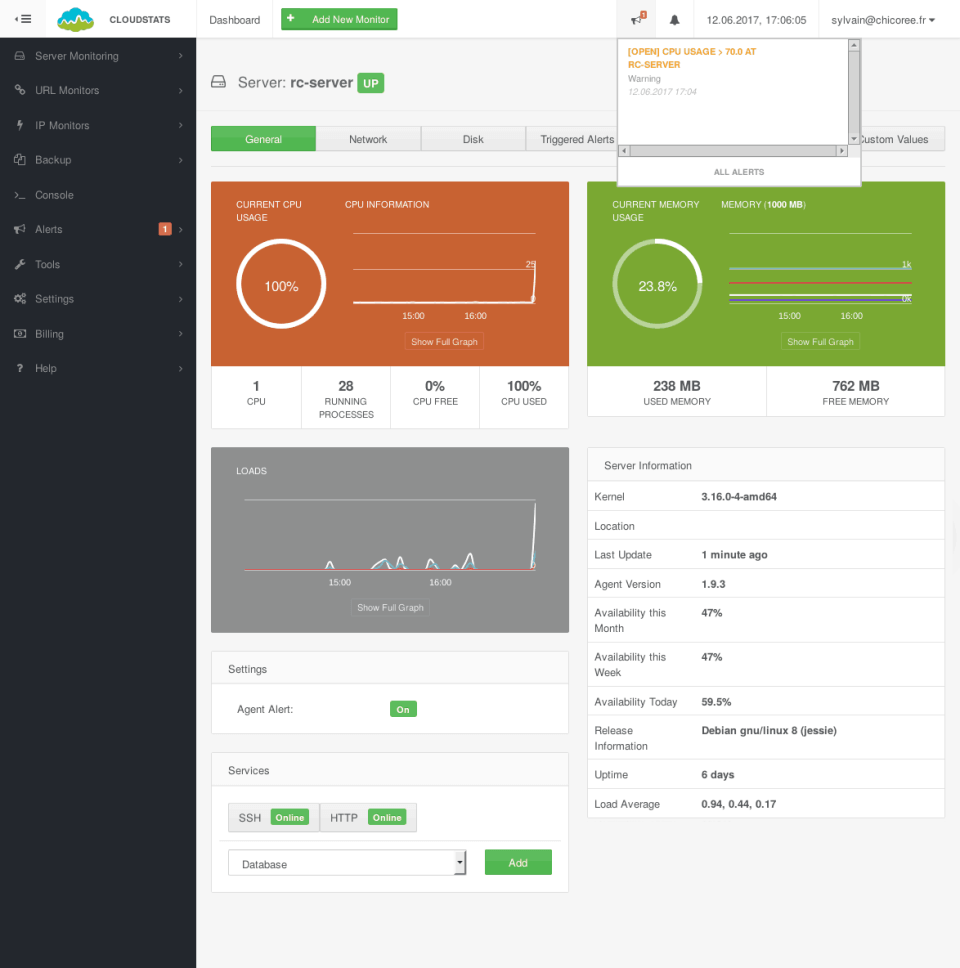
RAM or random-access memory is one of the most important factors to monitor on a server. It’s similar to disk space in that it has to do with storing data. RAM is the primary memory but it’s only stored for a short time—that is, until the server is turned off or there is a power failure.
RAM stores the data and information that your computer is actively using. Because it doesn’t have to go to the hard disk to pull the data it needs right away, everything runs faster.
Server monitoring tools with RAM monitoring can let you know when it’s time to upgrade. It tracks used and available memory, cached memory, and often lets you set personalized alerts so you can monitor thresholds that are useful to you.
8. Router Monitoring
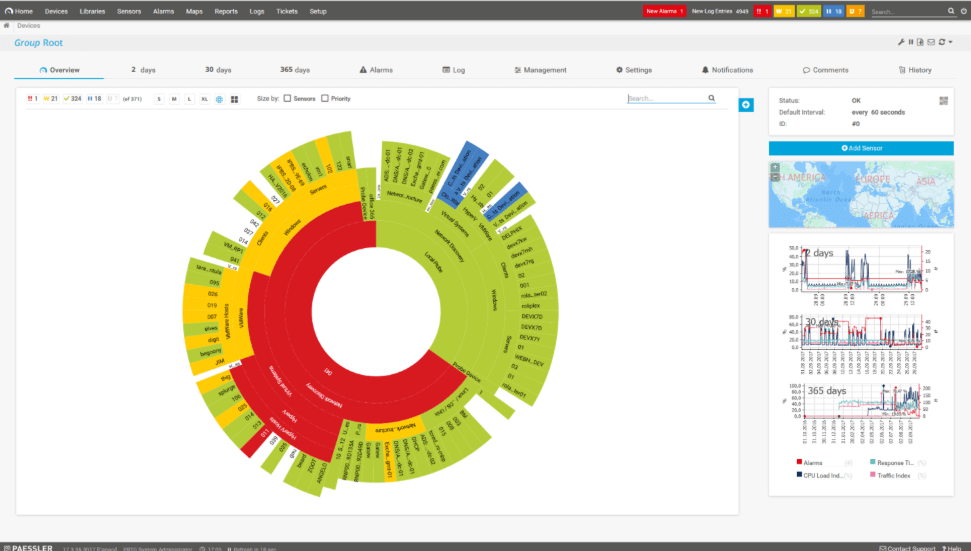
Routers let information in and out of the network, allowing communication between the server and the internet. Router management tools can monitor bandwidth, which we discussed earlier, but they can also monitor data flow.
Flow analysis provides information about the data that’s passing through the router, not only quantitatively tracking how much data is passing through but also giving you a lot of useful information about that data.
These tools use software that’s already integrated into your router to determine the source address and destination address and usage by application. Simple network management protocol is the most common technology for router monitoring, and it allows the server to publish certain metrics that can be read and sometimes modified.
9. Switch Monitoring
Switches are the building blocks of a network, connecting servers to everything from computers to printers to wireless access points within the network. The function of the switches is to enable all the devices to communicate with each other.
Switch monitoring ensures that all devices that the server is communicating with are currently operational. It also lets you monitor the traffic passing through the switches, ensuring optimal and efficient performance monitoring in the network.
10. Customizable Dashboards
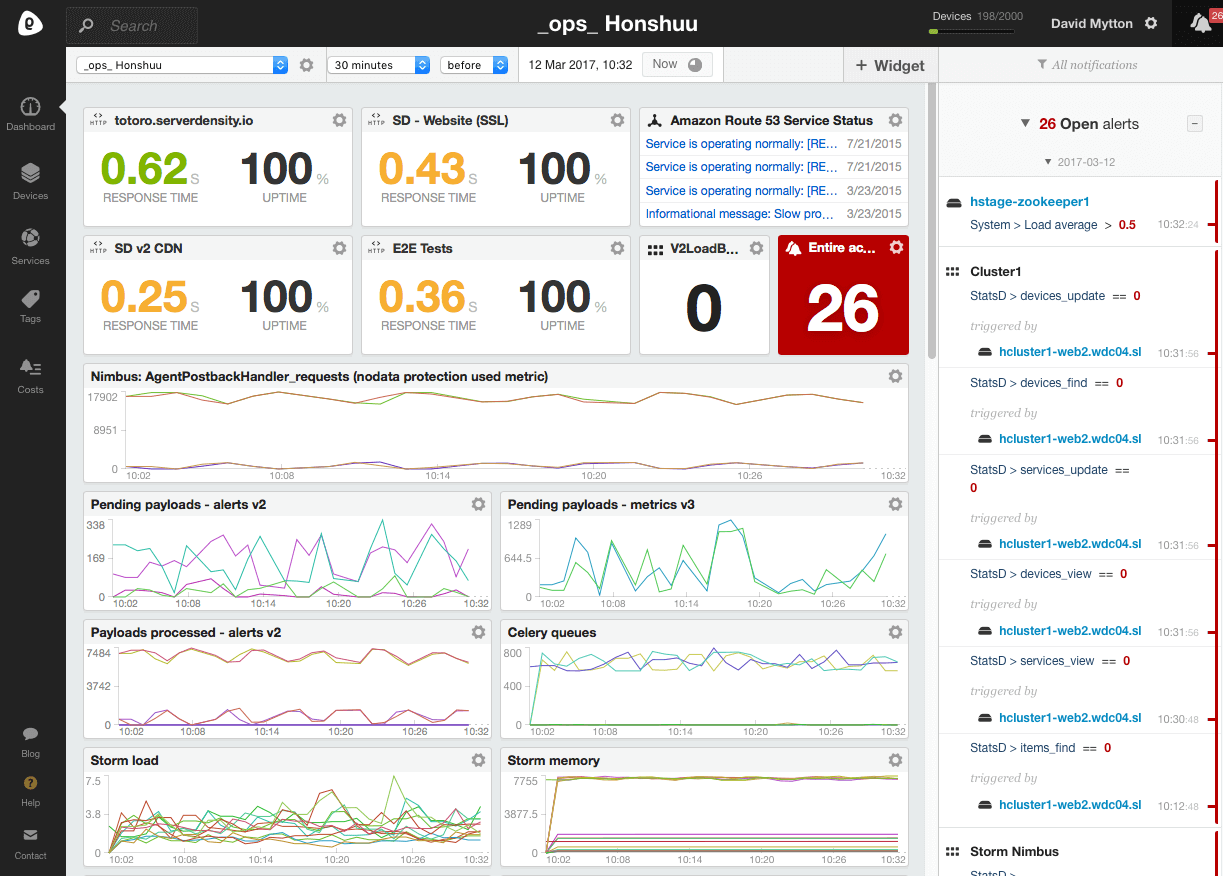
One of the most useful things to look for in a server monitoring tool is a customizable dashboard. This isn’t necessarily a make-or-break feature but being able to customize what data you see, what visualizations you prefer, and what widgets best support your work will improve your process. Drag-and-drop dashboards can let you quickly and easily move things around so that information is readable at a glance.
Server monitoring tools that offer customizable dashboards place themselves ahead of their competitors in ease-of-use and flexibility. Even better if different users are empowered to construct their own unique dashboard based on their individual needs.
11. Remote Access
Remote access is one of the most useful features in any type of hardware monitoring. It not only allows you to monitor the status of your servers but also to intervene and potentially fix many issues without having to go into the server room.
Some tools let you take complete control of other devices on the network. Remote access is a pretty common feature these days, but it’s still one that you should look out for when choosing a server monitoring tool for your purposes.
How to Choose Server Monitoring Tools
There are a lot of things to consider before purchasing a server monitoring tool in addition to the features. The first thing you should do is think about what your organization needs to monitor and what it wants to monitor.
- How many servers do you have?
- How much infrastructure monitoring do you need?
- What is each server dedicated to?
- How many items do you want to monitor?
Once you have a better idea of what you’re looking at, you can better decide which tool suits you best.
Some products have more narrow functions while others branch out and allow you to monitor other applications. As you can see from the 11 features listed above, server monitoring tools can be quite impressive in scope. Don’t go overboard and pay for features you don’t need.
Open Source vs Commercial
Another feature that you’ll see as you shop around for server monitoring tools is that some of them are open source and some are commercial releases.
Commercial Software
Commercial server monitoring tools and other software are created, sold, and supported by companies looking to make a profit. Sometimes, they sell licenses for their software and you have to pay to renew every year or so.
The initial licensing fee can be pretty steep, and the renewal fees add up over time. However, they often come with installation assistance, onboarding support, and a dedicated customer service team.
For the most part, commercial products have a wide range of features right out of the box without any need to add to the program for monitoring SQL server performance. Commercial products also come with qualified and reliable tech support and customer service, which makes sense since you’re unlikely to renew your license if you’re unhappy with the product and the support you receive.
If you have a set system in place and need server monitoring software that will easily integrate with other popular software, a commercial product is probably the best choice. One the other hand, if your business doesn’t have a specific platform in place, open source might be a better option, especially if you are concerned about your budget.
Related Read: THE 10 BEST SQL ANALYTICS SERVICES FOR QA TEAMS
Open Source Software
Open source tools are free and managed by communities of developers who continue to update and manage the software, improving the quality and adapting the software based on the needs of the users. Open source software is generally very inexpensive, and in some cases, it’s free. These solutions take on a more DIY approach, using community forums to collectively problem solve.
As for open source tools, they are a great choice if you want something that you can customize. Open source products can usually be tailored to meet any needs, as long as you have the IT talent to do the programming. This versatility is very convenient if your business expands or if you’re looking for flexibility in future development.
Open source software is supported by programmers who volunteer their time, so while you may be able to get the technology for free or super cheap, it might be difficult to get support if you have a problem.
Need expert help selecting the right Other Software?
We’ve joined up with Crozdesk.com to give all our readers (yes, you!) access to Crozdesk’s software advisors. Just use the form below to share your needs, and they will contact you at no cost or commitment. You will then be matched and connected to a shortlist of vendors that best fit your company, and you can access exclusive software discounts!
What Do You Think About Server Monitoring Tools?
I hope you found this article helpful when it comes to understanding server monitoring tools, their features, and what they can do. Leave a comment if you think I missed anything; I love hearing from readers.
Keep up with all the latest tools, trends and expert artickles by subscribing to the The QA Lead newsletter.
Or, head over to our podcast library and learn from experts and CEOs whether you choose to read/listen to them. Here's one we picked out for you: AUTOMATED TESTING W/ TESTRIGOR CEO ARTEM GOLUBEV & PAUL GROSSMAN




